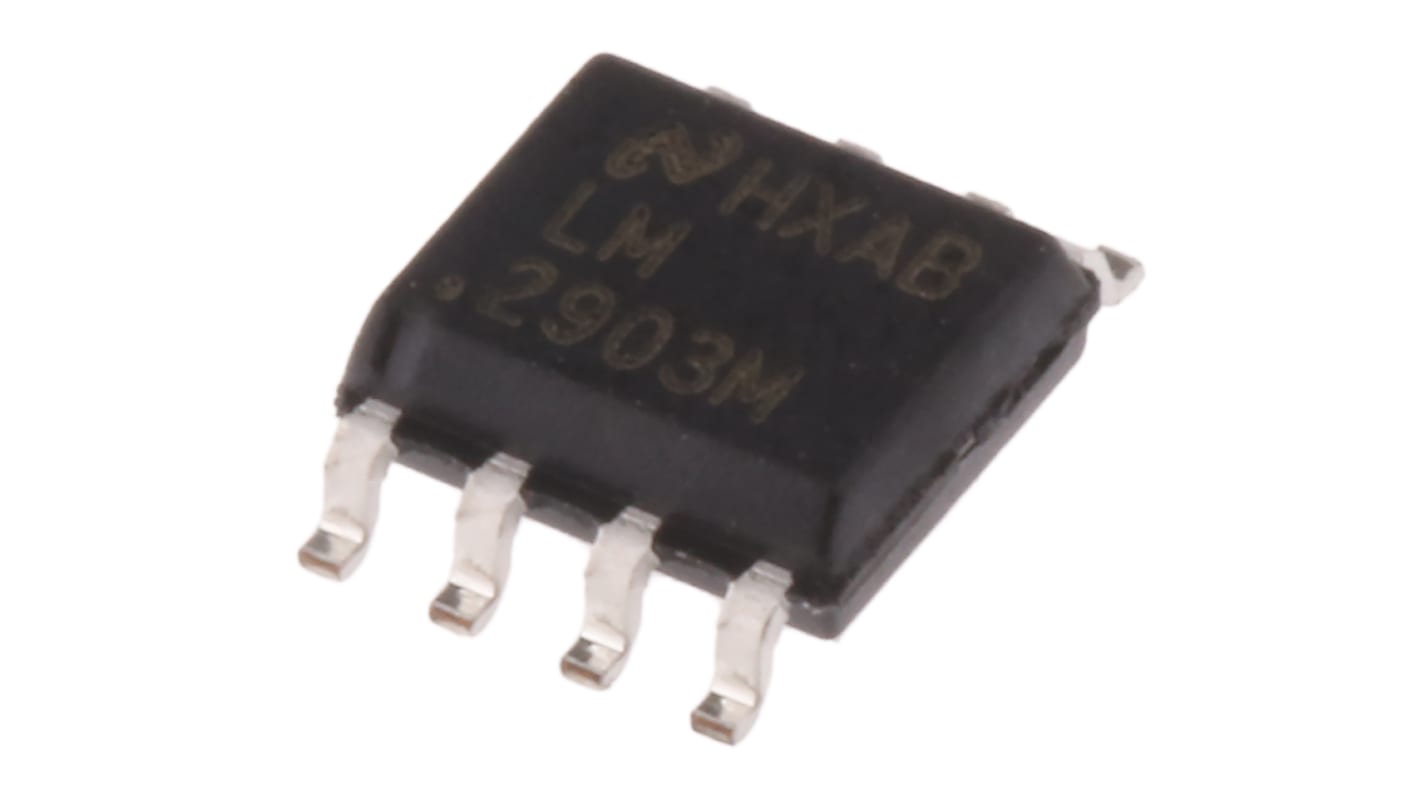LM2903M/NOPB Texas Instruments, Dual Comparator, Open Collector O/P, 1.5μs 3 → 28 V 8-Pin SOIC
- RS Stock No.:
- 536-1085P
- Mfr. Part No.:
- LM2903M/NOPB
- Brand:
- Texas Instruments

Subtotal 20 units (supplied in a tube)*
£10.52
(exc. VAT)
£12.62
(inc. VAT)
FREE delivery for orders over £50.00
In Stock
- 2,840 unit(s) ready to ship
Need more? Click ‘Check delivery dates’ to find extra stock and lead times.
Units | Per unit |
|---|---|
| 20 + | £0.526 |
*price indicative
- RS Stock No.:
- 536-1085P
- Mfr. Part No.:
- LM2903M/NOPB
- Brand:
- Texas Instruments
Specifications
Technical Reference
Legislation and Compliance
Product Details
Find similar products by selecting one or more attributes.
Select all | Attribute | Value |
|---|---|---|
| Brand | Texas Instruments | |
| Comparator Type | Differential | |
| Mounting Type | Surface Mount | |
| Package Type | SOIC | |
| Power Supply Type | Dual, Single | |
| Output Type | Open Collector | |
| Number of Channels per Chip | 2 | |
| Typical Response Time | 1.5µs | |
| Pin Count | 8 | |
| Typical Single Supply Voltage | 3 → 28 V | |
| Dimensions | 4.9 x 3.9 x 1.45mm | |
| Length | 4.9mm | |
| Width | 3.9mm | |
| Height | 1.45mm | |
| Typical Dual Supply Voltage | ±12 V, ±15 V, ±3 V, ±5 V, ±9 V | |
| Minimum Operating Temperature | -40 °C | |
| Typical Voltage Gain | 100 dB | |
| Maximum Operating Temperature | +85 °C | |
| Select all | ||
|---|---|---|
Brand Texas Instruments | ||
Comparator Type Differential | ||
Mounting Type Surface Mount | ||
Package Type SOIC | ||
Power Supply Type Dual, Single | ||
Output Type Open Collector | ||
Number of Channels per Chip 2 | ||
Typical Response Time 1.5µs | ||
Pin Count 8 | ||
Typical Single Supply Voltage 3 → 28 V | ||
Dimensions 4.9 x 3.9 x 1.45mm | ||
Length 4.9mm | ||
Width 3.9mm | ||
Height 1.45mm | ||
Typical Dual Supply Voltage ±12 V, ±15 V, ±3 V, ±5 V, ±9 V | ||
Minimum Operating Temperature -40 °C | ||
Typical Voltage Gain 100 dB | ||
Maximum Operating Temperature +85 °C | ||
LMx93/LM2903 family Dual Comparators
The Texas Instruments LM193, LM293, LM393 and LM2903 are dual differential input voltage comparators designed to operate from a single power supply over a wide range of voltages. The common mode input voltage range includes ground and the devices have open collector outputs.
Comparators, Texas Instruments
Texas Instruments’ range of voltage comparators includes not only conventional single, dual and quad comparator packages but also window comparators and over- & under-voltage supervisors.
Although comparators and operational amplifiers are superficially similar devices their operation in practical applications is very different. Op amps are intended for linear operation accompanied by suitable feedback whereas comparators are tailored for rapid switching and generally operated in open-loop mode. Dedicated voltage comparators have significantly shorter propagation delays and are capable of faster response times under saturated conditions. Most comparators are also more tolerant of high differential input voltages and many have open-collector outputs allowing parallel operation with other devices.
Although comparators and operational amplifiers are superficially similar devices their operation in practical applications is very different. Op amps are intended for linear operation accompanied by suitable feedback whereas comparators are tailored for rapid switching and generally operated in open-loop mode. Dedicated voltage comparators have significantly shorter propagation delays and are capable of faster response times under saturated conditions. Most comparators are also more tolerant of high differential input voltages and many have open-collector outputs allowing parallel operation with other devices.
